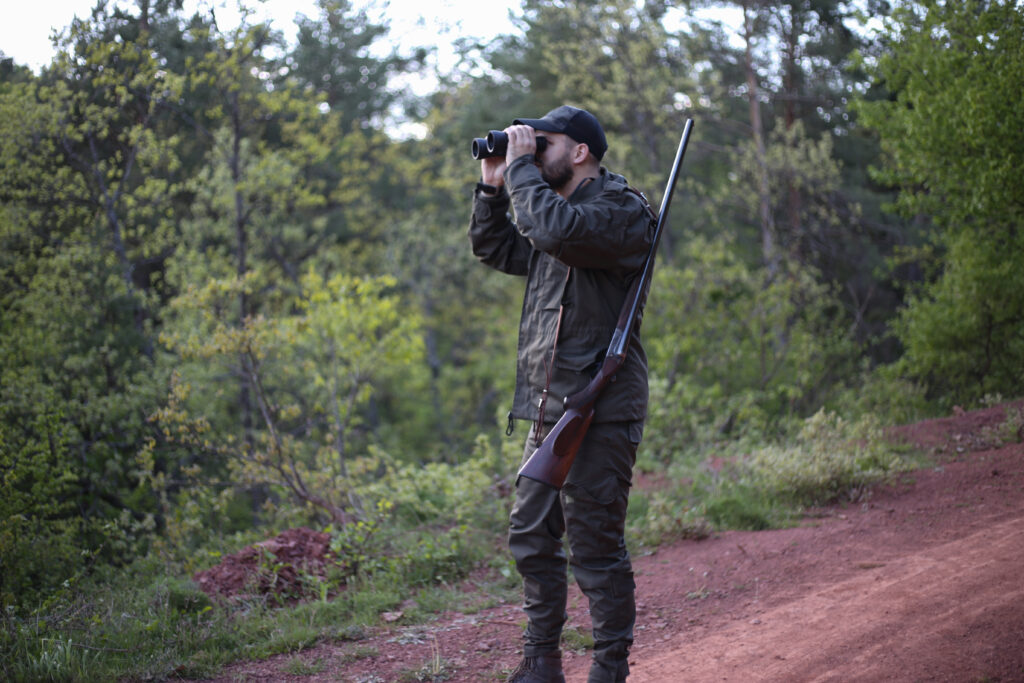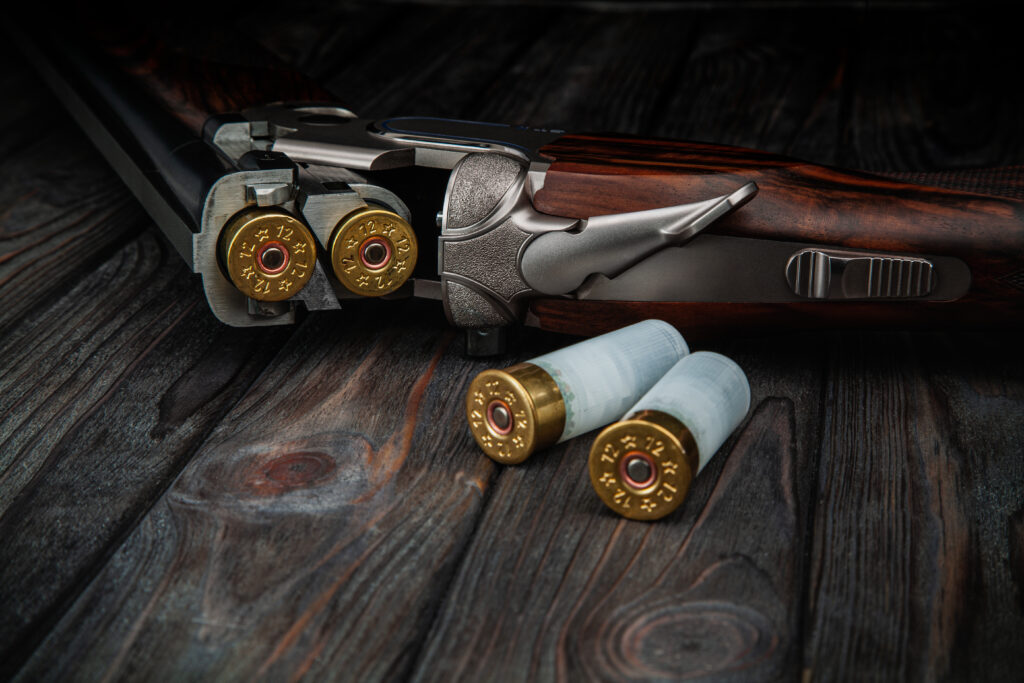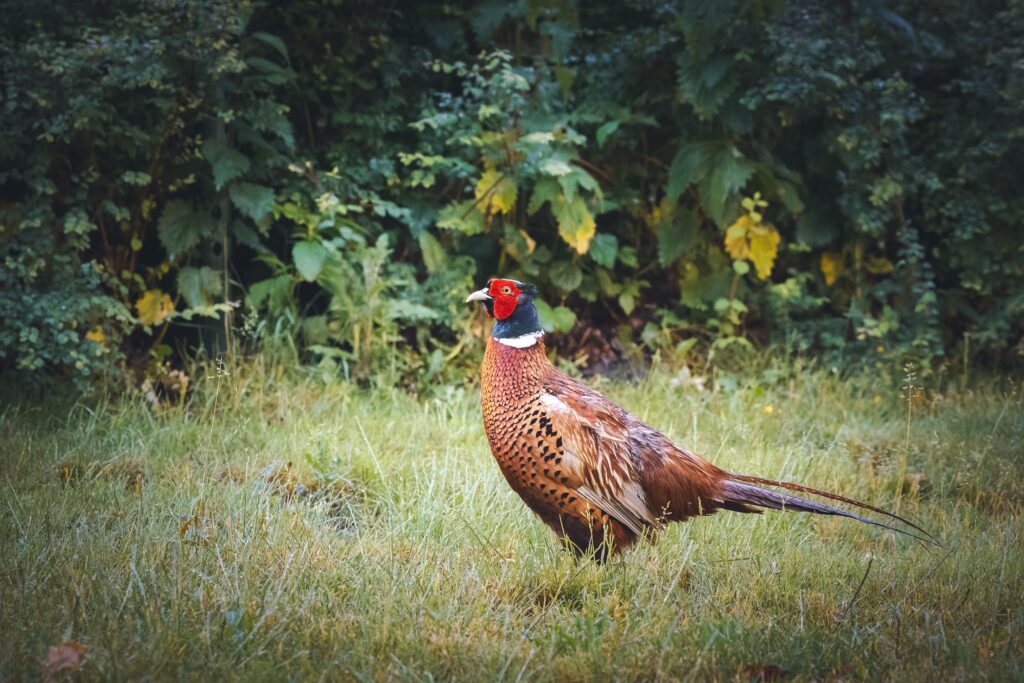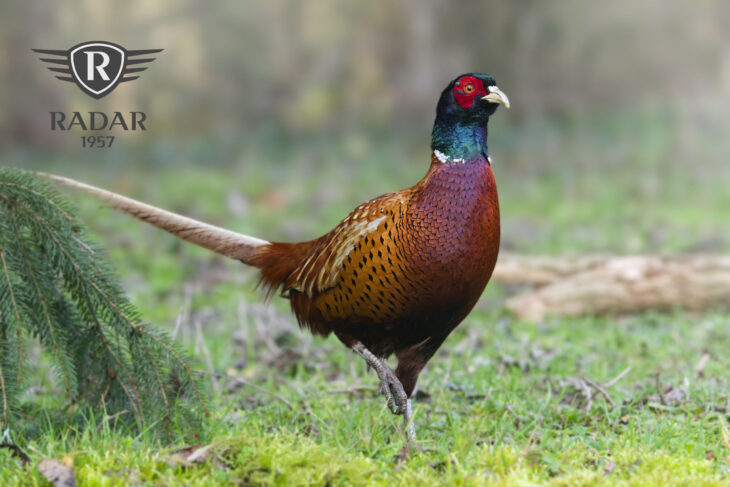Pheasant hunting represents one of the most popular and appreciated hunting activities, combining tradition and technique in an engaging experience. In this comprehensive guide, we’ll explore the best strategies, necessary equipment, and practical tips for effective and responsible hunting.
Pheasant Habitat: Where to Find Them
The pheasant prefers diverse environments characterized by:
- Transition zones between woodland and open field
- Areas with low and thick vegetation
- Cultivated fields, especially after harvest
- Areas rich in berries and seeds
- Areas with water sources nearby
During different times of the day, these birds modify their habits: in the early morning hours, they are often found at field edges searching for food, while during warmer hours, they tend to shelter in thicker vegetation.

Main Hunting Techniques
Pheasant hunting requires deep knowledge of different hunting techniques, each with specific characteristics and advantages. The choice of method depends on various factors, including terrain type, vegetation density, and, naturally, the experience of both hunter and dog. The approach to pheasant hunting has evolved over time but maintains strong ties with hunting tradition, particularly in using dogs as indispensable partners. The key to success lies in the ability to adapt technique to specific terrain conditions and game behavior, which can vary significantly based on season and environmental conditions. A fundamental aspect is reading the terrain and understanding pheasant movement patterns, which allow choosing the most effective strategy for each situation.
Hunting with Pointing Dogs
The most traditional and appreciated technique involves using pointing dogs such as:
- Pointer
- Setter
- Italian Bracco
- Epagneul Breton
The dog explores the territory following a fan pattern, freezes on point when locating game, allowing the hunter to approach the ideal shooting position.
Hunting with Flushing Dogs
An effective alternative using:
- Springer Spaniel
- Cocker Spaniel
- Labrador Retriever
These dogs work closer to the hunter, pushing the pheasant to flush with a more direct and dynamic action.

Essential Equipment
Equipment choice represents a fundamental aspect for successful pheasant hunting. Proper equipment not only increases success probability but also ensures greater safety and comfort during hunting activity. Selecting the right tools must consider various factors: hunting territory, typical seasonal weather conditions, and, naturally, the hunter’s personal preferences. It’s important to remember that even the best gun or most expensive accessories cannot compensate for lack of technique and experience, but having the right equipment allows you to make the most of your skills in the field. Particular attention must be paid to equipment maintenance: a perfectly functioning weapon and well-maintained clothing are essential prerequisites for a satisfying hunting day.
For effective pheasant hunting, the following are recommended:
Shotgun:
- Gauge: preferably 12 or 20
- Choke: modified or full
- Barrel length: 65-71 cm
- Weight: around 3 kg for good balance
Ammunition:
- Shot size: #6-7 lead shot
- Weight: 32-36 grams
- Wads: preferably dispersing type
Technical Clothing:
- High-visibility multi-pocket vest
- Tear-resistant pants
- Waterproof boots with non-slip soles
- Brimmed hat
- Technical gloves for secure grip

Practical Tips for Effective Hunting
Success in pheasant hunting is never a matter of chance, but the result of careful planning and methodical application of established techniques. Field experience teaches that even expert hunters must pay constant attention to details and never underestimate the importance of preparation. The ability to read the environment, interpret signs of game presence, and properly manage your dog are skills that refine over time but require constant attention and dedication. Particularly important is the systematic approach to the hunt: each outing should be preceded by careful evaluation of environmental conditions and follow a well-defined strategy. The pheasant is game that, despite its relatively predictable habits, can be extremely elusive if proper precautions and approach techniques aren’t adopted. The synergy between hunter and dog, combined with correct application of movement and shooting techniques, represents the key to effective and satisfying hunting.
1. Planning:
- Study the territory in advance
- Check wind direction
- Start hunting in early morning hours
2. Field Movement:
- Proceed upwind when possible
- Maintain constant and silent pace
- Pay attention to presence signs (tracks, droppings, feathers)
3. Dog Management:
- Maintain constant control
- Respect recovery times
- Reward correct behaviors
4. Shooting Techniques:
- Anticipate bird trajectory
- Stay calm at flush moment
- Follow movement with fluid action
Common Mistakes to Avoid
- Underestimating wind importance
- Moving too quickly on terrain
- Ignoring dog signals
- Not respecting group safety distances
Conclusion
Pheasant hunting requires experience, technique, and the right equipment. To ensure your best performance in the field, visit RADAR1957.com, where you’ll find a complete selection of technical clothing, accessories, and specific ammunition for pheasant hunting. Our experts are available to advise you on the products best suited to your needs.

